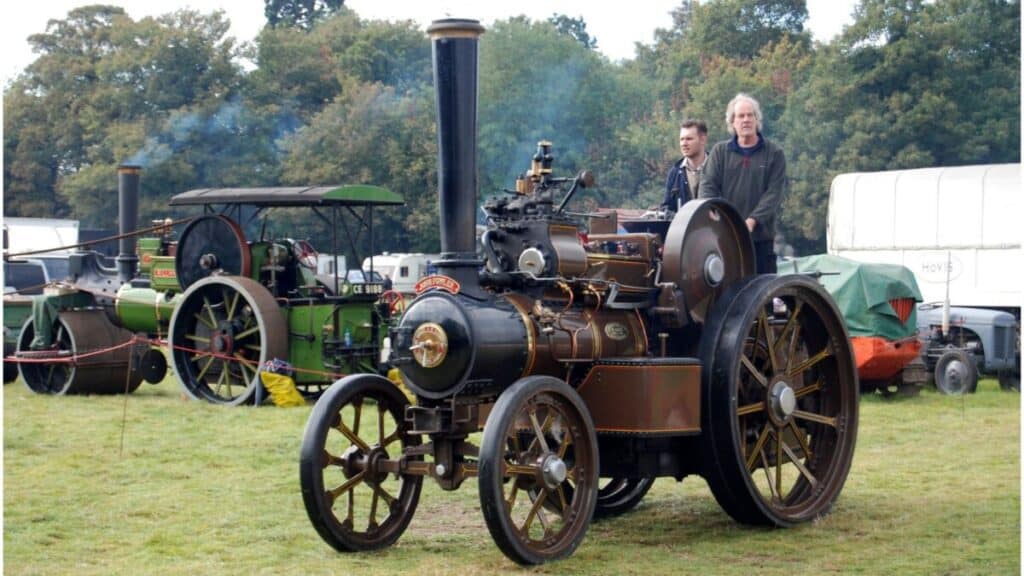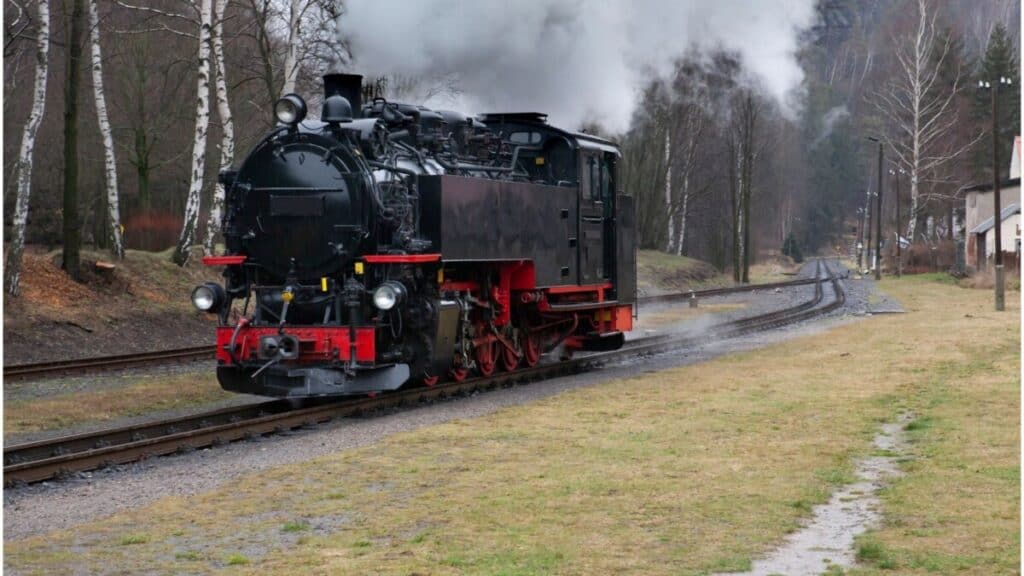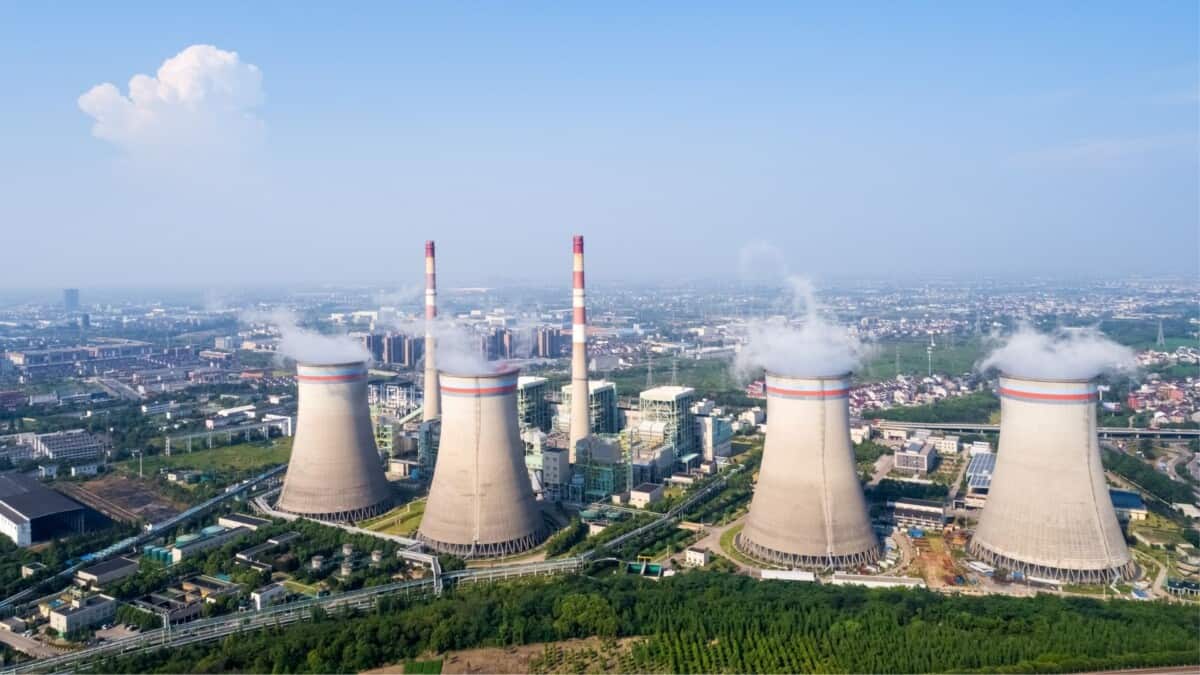The steam engine has a long and storied history, dating back to the early 18th century. Used for a wide variety of purposes, the steam engine is an essential piece of technology that has helped power the world economy for hundreds of years.
A steam engine is a device that uses steam to power machinery. The first steam engine was built in 1712 by Thomas Newcomen and was used to pump water out of a tin mine.
Since then, the steam engine has been used in all kinds of applications, from locomotives to boats to turbines. Steam engines are still in use today, and there is potential for them to be used even more in the future. Let’s take a closer look at the steam engine’s history, uses, and future.

Steam Engine: Operation and History
The steam engine was the first machine capable of efficiently harnessing the energy accumulated in fuels to generate movement. A steam engine does not create energy but instead uses steam to transform the hot energy released by burning fuel.
Every steam engine has a furnace to burn coal, oil, wood, or other fuel to produce heat. A steam engine converts the thermal energy of steam into mechanical work.
In addition, the steam engine has a boiler. Thus, the heat from fuel-burning causes the water to turn into steam inside the boiler. With the process, the steam expands and occupies a space many times larger than that occupied by the water.
The energy produced by the expansion can be used in two ways: The first, by moving a piston in a back-and-forth motion, or by driving a turbine.
The steam engine was one of the most important inventions at an industrial level: it revolutionized the way of conceiving production systems and introduced fundamental changes, effectively leading to the rebirth of the English economy.
Between the middle of the 18th century and about 1830, starting from England, an epochal change for humanity took place: the first industrial revolution.
Before then, the world had as the only possible source of mechanical strength, for any work (agricultural or artisanal) or for the traction of vehicles intended for the transport of people or things, only the arms of the man or some domestic animal, such as the horse, or the ox.
It is precisely the steam engine, perfected by Watt, that brought about an epochal change that allowed humanity for the first time in history to free itself from physical fatigue with a vehicle capable of providing continuity, power, and mechanical work.
The change began with the first applications of the steam engine to water pumps used for mines and machines associated with looms for textile production, but it soon invested and radically transformed every aspect of economic and social life, from the production of goods to transport.
The industrial revolution expanded quickly from England to Western Europe first and to other countries after that. These changes were important and widespread and revolutionized society.
The inventor of the steam engine
The steam engine is commonly attributed to James Watt, but before his model, several experiments were carried out by some leading inventors. So, if we are all used to associating Watt’s name with the steam engine, we must remember that others had already laid the foundations for this revolution before him.
Of course, the Scottish engineer was undoubtedly the first to develop a more efficient and advanced system. However, before him, other inventors had already exploited the mechanical energy produced by steam.
Papin’s steam engine
Denis Papin was a French mathematician, physicist, and inventor and was, in fact, the first to carry out experiments on the steam engine.
In 1690, Denis Papin invented the first yet undeveloped steam engine. It consisted of a cylinder inside which the water was brought to a boil. The pressure produced by the steam lifted a plunger that ran inside the cylinder. This was an elementary experiment, on which, however, subsequent inventors were able to draw inspiration.
The Newcomen Steam Engine
In 1705 Thomas Newcomen took a step forward, developing the first steam engine for industrial processes. It was precisely this invention that Watt drew inspiration from in the following years.
We can say that Newcomen’s machine was the undisputed protagonist of the First Industrial Revolution. The system featured a piston pump driven by an internal condensing steam engine.
The Newcomen steam engine was primarily used to pump water out of coal mines for easy extraction. However, it was still a basic system, which in the following years experienced a turning point thanks to Watt.
James Watt’s steam engine
Watt’s invention was the first example of a separate condenser steam engine. The inventor was based on the system developed by Newcomen but improved it, making it safer and usable on larger systems.
Watt’s steam engine, which was developed between 1763 and 1775, and was distinguished from that of Newcomen due to its external condenser and rotary motion, two factors that raised this invention to a symbol of the Industrial Revolution.

Uses of steam engines
Although it may appear outdated, the steam engine is still very important today and represents a still practiced locomotion system. Large military ships, such as nuclear aircraft carriers, and submarines, can move with steam.
The nuclear reactor, installed on them as a fundamental element of energy production, can, in fact, only produce heat. This heat is used to generate steam and drive a turbine, creating the driving force. This force is transmitted to the propellers of the submarine or ship.
Steam engines, with turbines, are fundamental in producing energy through nuclear reactions. In fact, in nuclear power plants, a nuclear fission reaction is produced in the heart of the reactor.
This energy, by itself, would be useless if it were not converted. At this point, the steam turbine is instrumental in the power plants: the energy produced by nuclear reactions is used to produce steam that sets in motion a turbine which, by turning, can produce electricity, a bit like a bicycle dynamo.
The steam engine serves and is used in many applications in daily life. It is used in the textile field, steamships, trains, and steam pumps.
It provides a greater amount of power to the machine, which generates an increase in performance and the efficiency of energy production. They are machines used to start large engines and a series of different devices such as pumps and motors.
Modern steam engines and their future.
Steam is still used in many applications worldwide, especially for generating electricity. Nuclear power plants use steam generated by nuclear fission to produce this vital resource that powers our modern lives.
With the beginning of new energy sources in the 20th and 21st centuries, the want for steam power appears yet again. Modern technologies make it possible to achieve 95% of emissions into the atmosphere and increase efficiency to 21%.
Because of the cleanliness of steam engine power, compared to fossil fuel, people are looking at steam locomotives in a new light.
There are indications that the future will open new ways for modern steam engines, and with the rise of global warming, they may garner more attention. Steam engines have always been relatively inexpensive, which will be an added advantage for future development.




